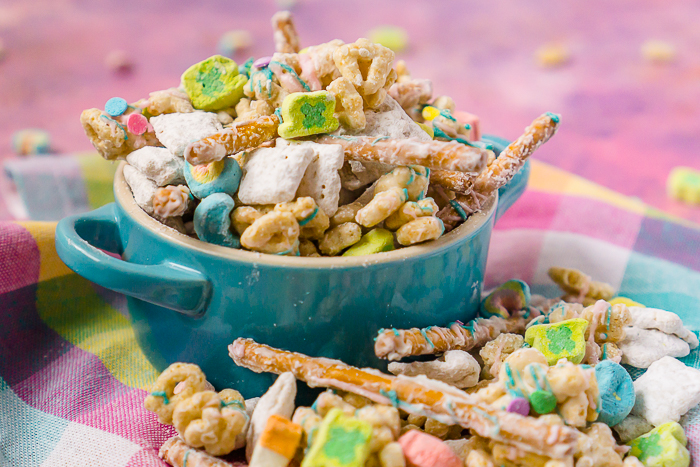Chow Time Charms: Crafting Perfect Pup Meals


There’s nothing quite like the joy of watching your furry friend eagerly anticipate mealtime. Crafting the perfect pup meal is an art that combines love, knowledge, and a sprinkle of creativity. Ensuring that your dog’s meals are nutritious, delicious, and tailored to their specific needs can make a world of difference in their overall health and happiness. Let’s explore how to create meals that are both delightful and beneficial for your canine companion.
The Foundation of a Balanced Diet
Creating the perfect meal for your dog starts with understanding the basics of a balanced diet. dog food should provide a harmonious blend of proteins, fats, carbohydrates, vitamins, and minerals. Each component plays a crucial role in your dog’s well-being.
High-Quality Proteins
Proteins are the building blocks of your dog’s diet, essential for growth, muscle development, and overall health. When selecting dog food, look for high-quality protein sources like chicken, beef, lamb, or fish. These should be the primary ingredients listed on the label.
Healthy Fats
Fats are a vital energy source and help maintain healthy skin and a glossy coat. Ingredients like fish oil, flaxseed, and chicken fat are excellent sources of healthy fats. They also play a role in brain development and function.
Essential Carbohydrates
Carbohydrates provide the necessary energy for your dog’s daily activities. Whole grains such as brown rice, oats, and barley are excellent choices. For dogs with grain sensitivities, alternatives like sweet potatoes and peas offer similar benefits.
Vitamins and Minerals
Vitamins and minerals are crucial for supporting your dog’s immune system, bone health, and overall vitality. Fruits and vegetables like carrots, spinach, blueberries, and apples can be great sources of these essential nutrients.
Customizing Meals for Your Dog’s Life Stage
Dogs have different nutritional needs at various stages of their lives. Tailoring dog food to your pup’s age ensures they receive the right balance of nutrients to thrive.
Puppies
Puppies require more protein, fat, and calories to support their rapid growth and development. Look for dog food specifically formulated for puppies, rich in DHA for brain development and calcium for strong bones.
Adult Dogs
Adult dogs need a balanced diet that maintains their energy levels and overall health. A mix of proteins, fats, and carbohydrates in appropriate proportions is key. Ensure the dog food provides antioxidants and essential fatty acids to keep their immune system strong and coat shiny.
Senior Dogs
As dogs age, their metabolism slows down, and their dietary needs change. Senior dog food should be lower in calories to prevent weight gain, higher in fiber for digestive health, and contain joint-supporting supplements like glucosamine and chondroitin.
Exploring Different Food Types
There are various types of dog food available, each with its unique benefits. Understanding the differences can help you choose the best option for your dog.
Dry Food (Kibble)
Dry dog food is convenient, cost-effective, and great for dental health. The crunchiness of kibble helps reduce plaque and tartar buildup. Look for high-quality kibble with meat as the first ingredient and minimal fillers.
Wet Food (Canned)
Wet dog food is more palatable and hydrating due to its higher moisture content. It’s an excellent option for picky eaters, older dogs, or those with dental issues. Ensure the wet food is free from artificial preservatives and contains a balanced mix of nutrients.
Raw Food
Raw dog food mimics a dog’s natural diet and often includes raw meat, bones, fruits, and vegetables. This diet can offer numerous benefits, including shinier coats, cleaner teeth, and increased energy. However, it’s essential to handle and prepare raw food safely to avoid bacterial contamination.
Homemade Meals
Crafting homemade meals allows you to control the ingredients and tailor the diet to your dog’s specific needs. However, it requires careful planning to ensure the meals are nutritionally balanced. Consulting with a veterinarian or a pet nutritionist can help you design a complete and balanced homemade diet.
Adding Variety with Toppings and Mix-Ins
Adding variety to your dog’s meals can make mealtime more exciting and nutritious. Toppings and mix-ins can provide additional nutrients and flavors.
Fresh Fruits and Vegetables
Incorporate fresh fruits and vegetables into your dog’s meals for added vitamins and minerals. Carrots, green beans, and blueberries are excellent choices that most dogs enjoy.
Protein Boosters
Adding cooked eggs, lean meats, or cottage cheese can boost the protein content of your dog’s meal. These additions should be plain and unseasoned to avoid upsetting your dog’s stomach.
Healthy Fats
A drizzle of fish oil or a sprinkle of flaxseed can enhance the flavor and provide essential omega-3 fatty acids, promoting a healthy coat and skin.
Broths and Gravies
Adding a bit of low-sodium broth or gravy can make dry dog food more enticing and provide extra hydration. Ensure these additions are free from harmful ingredients like onions and garlic.
Treats and Snacks: Healthy Indulgences
Treats and snacks are an integral part of your dog’s diet, whether for training or simply as a reward. Choosing healthy options ensures they complement your dog’s main meals without causing nutritional imbalances.
Natural Chews
Natural chews like bully sticks, antlers, and dehydrated meat treats provide both entertainment and nutritional benefits. They help clean teeth and satisfy your dog’s chewing instincts.
Homemade Treats
Making homemade treats allows you to control the ingredients and tailor them to your dog’s taste and dietary needs. Simple recipes using peanut butter, pumpkin, and oats can create delicious and nutritious snacks.
Training Treats
For training purposes, use small, low-calorie treats to avoid overfeeding. Soft treats that are easy to break apart are ideal for quick rewards during training sessions.
Monitoring and Adjusting Diets
Regularly monitoring your dog’s weight, energy levels, and overall health can help you adjust their diet as needed. Keep an eye on their coat condition, stool quality, and behavior. Any significant changes might indicate a need to tweak their diet or consult with a veterinarian.
Portion Control
Proper portion control is essential to prevent obesity and ensure your dog maintains a healthy weight. Follow the feeding guidelines on the dog food packaging and adjust based on your dog’s activity level and body condition.
Regular Vet Check-ups
Routine vet check-ups are crucial for monitoring your dog’s health and nutritional needs. Your vet can provide personalized recommendations based on your dog’s age, breed, and health status.
Conclusion
Crafting the perfect pup meal is a delightful blend of science, love, and a dash of creativity. By understanding the basics of a balanced diet, customizing meals to your dog’s life stage, and exploring different food types and additions, you can ensure your furry friend enjoys every bite. Remember, a well-fed dog is a happy dog, and with thoughtful planning, you can make every mealtime a charming and nutritious experience for your beloved pet.


